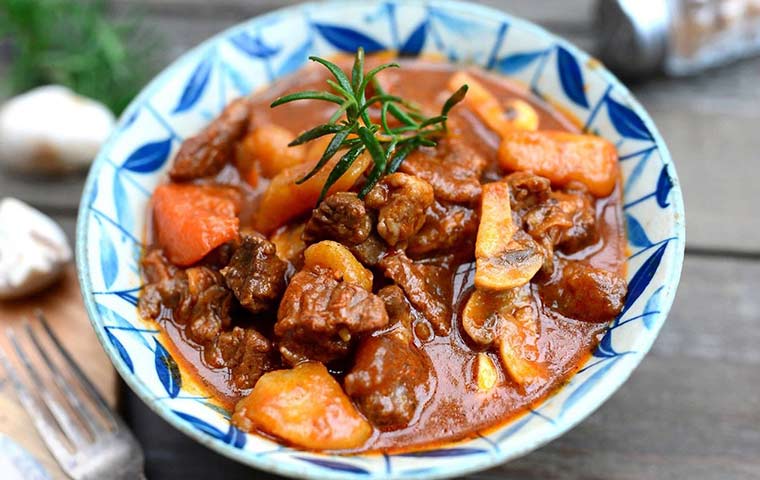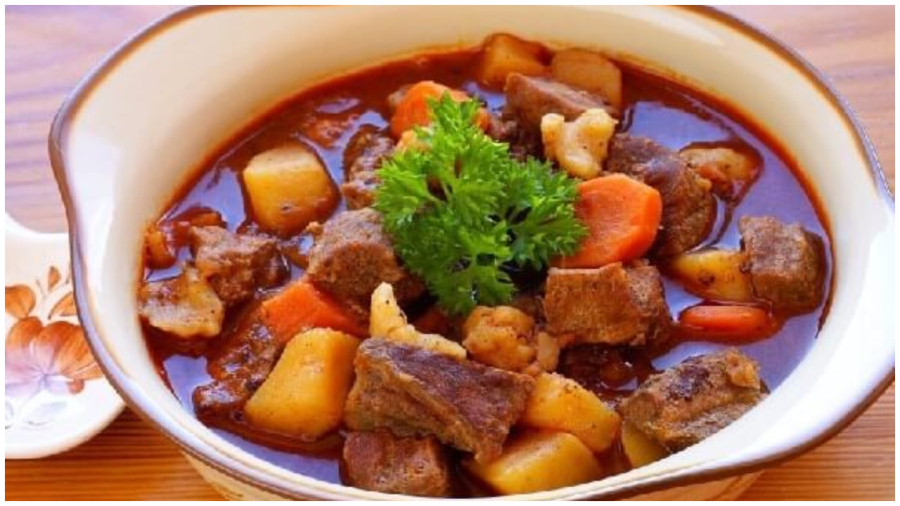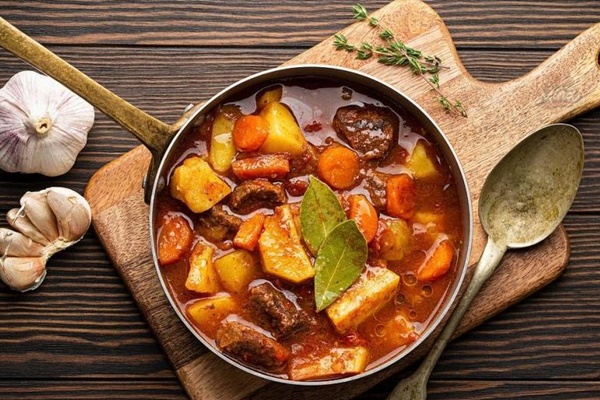Beef stew in red wine sauce is a familiar and beloved dish among many. This nutritious meal can be served with white rice, bread, or rice vermicelli, making it a crowd favorite. However, the traditional cooking method requires a significant amount of time and effort, deterring many home cooks. But with the following secret recipe, you’ll be able to create a delicious and mouthwatering dish without spending hours in the kitchen.
Selecting the Best Beef for Your Stew
The key to a delicious meal always starts with choosing the right ingredients. When it comes to beef stew, opt for a fresh, red cut, free of any dark spots, liquid discharge, or strange odors. For stews, it’s best to select the chuck eye roll, a cut from the shoulder area, which tends to have more marbling and flavor.
Once you’ve purchased your beef, cut it into evenly sized cubes to ensure even cooking. It’s important to cut against the grain; otherwise, you’ll end up with tough, dry meat. Cutting against the grain will result in more tender and flavorful beef.

The Secret to Tender Beef Stew
A Delicious and Quick-Cooking Beef Stew
Parboil the Beef Before Stewing
Some believe that stewing beef only requires one round of cooking. However, for the best results, it’s recommended to parboil the beef. Bring a pot of water to a gentle boil, add the beef, and cook for about 3 minutes. This process helps remove any impurities and tightens the meat fibers, resulting in tender beef.
Marinate the Beef with Tapioca Starch
One secret to tender beef is to marinate it with tapioca starch. This ingredient not only tenderizes the meat but also thickens the stew, creating a rich and savory sauce.
Marinate the Beef with Wine or Beer
Professional chefs often marinate beef with wine or beer, especially when preparing dishes like beef stew or beef in wine sauce. This technique adds depth of flavor and helps tenderize the meat. Additionally, the natural sugars in beer can enhance the beef’s flavor and create a more delectable dish.

The Art of Delicious Beef Stew
Avoid Using Cold Water
An important rule to remember when stewing beef is never to use cold water. Cold water can cause the meat to seize up and become tough and dry. Always use boiling water, and if parboiling, ensure you use a separate pot of boiling water for the stewing process.
Add Sugar and Salt at the Right Time
If you don’t have a pressure cooker, there’s a simple trick to ensuring tender beef: add a spoonful of sugar to the pot after reducing the heat to low. This prevents the meat from toughening and helps it absorb the flavors more efficiently. After about 20-30 minutes, when the beef is almost cooked, add a pinch of salt and continue cooking for another 5 minutes before turning off the heat.
Don’t Add Vegetables Too Early
Beef stew often includes vegetables like potatoes and carrots, but these ingredients cook much faster than beef. Therefore, it’s best to add them only when the beef is already tender. Start with harder vegetables like carrots and turnips, followed by potatoes, and finally, quick-cooking vegetables like green beans.

The Science of Tender Beef Stew
Use a Pressure Cooker for Faster Results
If you’re short on time, using a pressure cooker can significantly reduce cooking time. With this handy kitchen appliance, you can have tender beef stew ready in a fraction of the time it would take on a stovetop.
Cook the Perfect Carrot Soup for Babies That Moms Will Love – Ready in No Time!
The recently released GREEN Electric Machine pressure cooker will help mothers cook carrot soup and provide their children with the nutrients they need to keep their eyes healthy. The pressure cooker will make it easier to whip up this nutritious snack that can provide kids with vitamin A supplements for improved vision.
The GREEN Electric Machine pressure cooker has just been unveiled, providing mothers with a convenient way to prepare carrot soup for their children. This healthful snack can give kids the vitamin A supplements they need to prevent eye diseases, promote healthy eyesight, and enjoy a delicious meal.



































